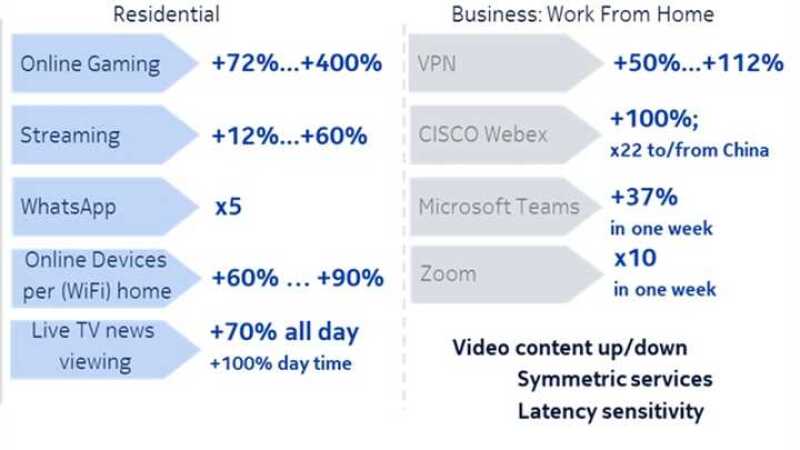Broadband has played a vital role during this crisis. and recent changes in digital behaviour have had a seismic effect on our networks. Until now, broadband operators have been using growth models that predicted a gradual increase in bandwidth demand of 30-40% over the next three or four years. Covid-19 has generated 30-40% growth overnight. We’ve seen huge spikes in usage across online gaming, VPN, streaming services, social media and video conferencing, to name a few .
No-one is predicting a post-Covid world exactly the same as before. This growth is not going to go away, at least not completely. Notwithstanding the likelihood that periodic lockdowns could be a way of life until a vaccine arrives, these new digital behaviours—increased homeworking, e-Health and e-Learning—will have a permanent effect on society and will continue to a significant degree.
We’ve updated our bandwidth modelling tool to reflect the effect these “new normal” behaviours are having on broadband networks and it shows that the minimum recommended bandwidth to comfortably work, learn and play in lockdown is 50 Mb/s downstream and 15 Mb/s upstream.

Network data also shows that mobile networks have suffered significant degradation in speeds and latency due to congestion that’s resulted from the crisis. That’s not surprising: mobile is designed for people on the move, not in lockdown.
Many countries are increasing mobile network capacity and coverage including rolling out of 5G, but that alone will not be enough. Fixed networks have been flooded with traffic but, by and large, have withheld the onslaught, demonstrating that they are the best option for dealing with the demands of a post-Covid world. Fixed networks need to coexist with mobile networks to deliver an affordable, resilient broadband experience to all citizens and businesses.
Yet there are still almost a billion households around the world with no fixed broadband connection. On top of that, there are another half billion with broadband services that struggle to cope with the increased demands of lockdown living. These households are vulnerable, both socially and economically, due to reduced access to information, essential services, and connectivity to others. This hinders a country’s ability to protect its citizens, its society and its economy. Governments, investors and operators need to come together to accelerate their fixed broadband plans.
Nokia’s Country Broadband Health Index shows how well networks (fixed and mobile) stand up to the challenge of the new normal. From this, it’s possible to determine priorities, whether connecting the unconnected, boosting minimum service levels, or adjusting the balance between fixed and mobile broadband penetration.
Then there are the many actions that governments can pursue to facilitate and accelerate their broadband agendas such as revising regulations on rights of way and civil works, improving access to shared infrastructure and in-building wiring, improving public intervention and access to public funding or ensuring the establishment of ‘5G-ready’ policies.
Ask anyone who has lived or is still living through lockdown to imagine what it would be like without their broadband connection, if they’re lucky enough to have one. Ask businesses what would happen if their employees couldn’t work from home or if customers couldn’t buy online. Broadband has given many of us a degree of continuity in our lives, a way of unlocking the lockdown. We owe the unconnected and the underserved the same opportunity.





